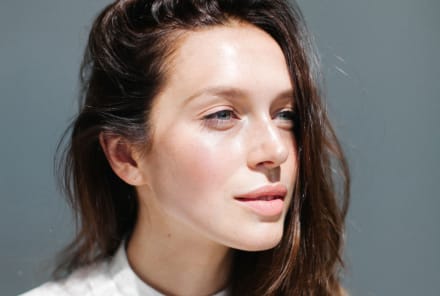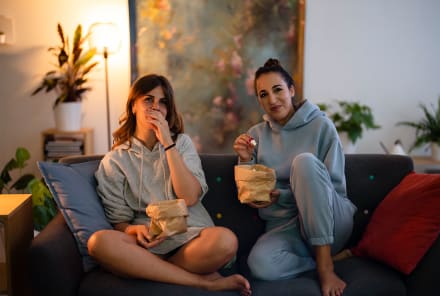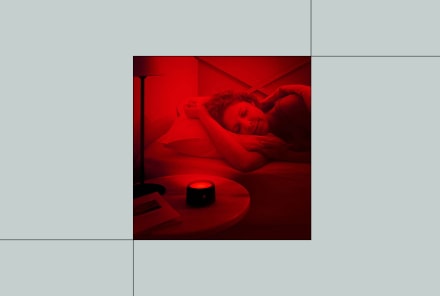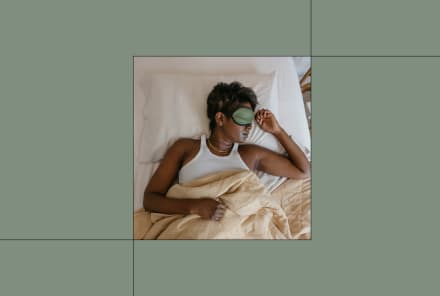Advertisement
How To Create A Personalized Wellness Routine That Actually Works For You

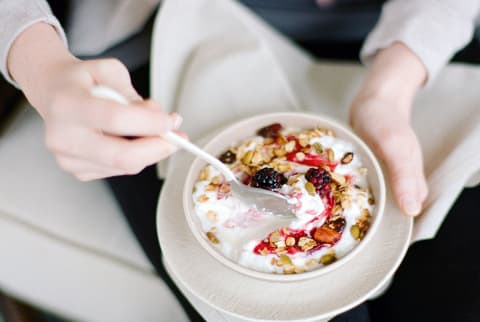
When it comes to addressing health and well-being goals, I often see people attempt to fix everything at once. They stock up on all the latest books, sign up for a gym membership, and pack enough kale in their crisper drawer to feed a small country.
That motivation lasts for a few days, or maybe even a week or two if inspiration strikes hard. But sooner than later, they get discouraged and abandon their goals.
Well-being doesn't happen overnight. When you tackle everything at once, you're most likely going to get burned out and ditch the entire process. To create a personalized wellness plan that actually works for you, you'll want to take the entirely opposite approach and start small.
We overestimate what we can accomplish in a month and underestimate what we can achieve in a year. I love the philosophy behind The ONE Thing by Gary W. Keller and Jay Papasan. "When you want the absolute best chance to succeed at anything you want, your approach should always be the same," they say. "Go small."
"'Going small' is ignoring all the things you could do and doing what you should do," they continue. "It's recognizing that not all things matter equally and finding the things that matter most. It's a tighter way to connect what you do with what you want. It's realizing that extraordinary results are directly determined by how narrow you can make your focus."
When you start small and focus on mastering one thing at a time, simple changes become lasting changes. Starting small helps build consistent, healthy habits that sustain you for the long haul.
As you make these small changes, one at a time, you'll be able to connect the dots between what you eat, how you live, and how you look and feel. Personalization is the foundation for success in any wellness plan, and it's easier than you think with these five strategies.
Strategy No. 1: Focus on your why.
Before you create a routine that works for you, get clear about why you're doing it. In other words, determine your big why. This will be your foundation to establish a personalized wellness routine and reach your goals.
Ask yourself what outcomes you're looking for. Then, get clear about why you want to reach them. I've had clients who initially told me they wanted to balance their blood sugar and lower insulin levels because their doctors were concerned about their bloodwork, or diabetes ran in their family, or they just knew that they wanted to get healthier.
But when I pushed them a little bit, their big why came out. Some of them wanted to maintain steady, sustained energy levels to stay active. Others wanted the sex drive and stamina they had when they were younger.
When you commit to specific goals—things like getting and keeping fasting blood glucose, fasting insulin, and hemoglobin A1C levels in a healthy range—your big why will keep you motivated on those days you'd rather blow off your workout or have after-work margaritas with your co-workers.
Once you've gotten honest about your big why, start living that way now. In other words, be it till you see it. Put yourself into that picture. How do those goals look and feel? What accomplishments might you achieve when you feel that way? How will your relationships improve? Your ultimate goal here is to live from a place of self-love and self-worth, all while keeping an eye on the important things you want to accomplish, one thing at a time.
Strategy No. 2: Create new habits.
When I was working on Dr. Phil, we had a guy who couldn't resist the drive-thru on the way to work. Passing by fast-food restaurants was a siren call for him, and he usually submitted.
Turns out that he had two different routes he could take to get to work every morning. One involved fast-food restaurants; the other did not. So we asked him to take the non-restaurant route and listen to personal-development shows on his drive. Guess what happened? He broke his fast-food breakfast habit.
Creating new habits becomes easier when you start small. But be honest with yourself here as you create new habits. If you're a late-night person, you're only going to let yourself down by committing to a 5 a.m. workout class. If you're learning to better manage stress but that fitness class your friend swears by spikes your cortisol levels, find something else that does help you wind down.
Strategy No. 3: Try habit stacking.
While you're creating new habits, try this simple trick called habit stacking. Pairing a new habit with something you normally do is a great way to start small and master a new habit.
"Habit stacking works because you eliminate the stress of adding too many new things to your life," says S.J. Scott in Habit Stacking: 127 Small Changes To Improve Your Health, Wealth, and Happiness. "Instead, you begin with a few simple but effective habits and then build on them as this routine becomes an important 'can't miss' part of your day."
I learned the art of habit stacking last year and applied it to my own routine. My goal was to meditate every morning, which as most of us know, is easier to say than do.
So I created a rule for myself: No coffee until after meditation. When I didn't meditate first thing in the morning, I didn't get coffee. And I am not a happy camper without coffee. The meditation rule became a habit, and I'm proud to say I now meditate every morning.
In Atomic Habits: An Easy & Proven Way To Build Good Habits & Break Bad Ones, James Clear provides other examples of habit stacking. When you sit down to dinner, think of one thing you're grateful for that happened today. Or when you take off your work shoes, change into your workout clothes immediately. "By linking your new habits to a cycle that is already built into your brain, you make it more likely that you'll stick to the new behavior," Clear writes in his book.
Strategy No. 4: Create accountability.
Ever get a big idea that you're super passionate about, but then you never really follow through with it? That's where having a like-minded, supportive friend, partner, or community who kindly but firmly holds you to your goals becomes helpful.
Once you've become clear about your big why and committed to doing one thing at a time, you'll want to create the accountability that holds you to your ideals. Here are a few ways you can do that:
- Pay attention to who you're surrounding yourself with. You are the average of the five people you spend the most time around. Are these people supporting you to live your big why?
- Find an accountability partner. This might be a friend on a similar path or a tough-but-fair colleague who will remind you of your goals.
- Step up that level of accountability by hiring a coach. Hire someone who is where you want to be and who can gently guide you on the path to getting there. Committing with your time and wallet is a great way to stay accountable to your big why.
- Find a community that supports your goals. That might be on social media, a local Meetup group, or an online virtual community that meets once a week.
Remember, when you find others who hold you accountable and support your success, you're also creating the foundation for them to reach their goals as well.
Strategy No. 5: What you measure and monitor, you can improve.
Tracking your progress can show you where you're on course and, more importantly, where you may need to adjust and improve. Technology has made measuring and optimizing easier and even more fun. But don't get hung up on fancy apps and gadgets. If maybe you prefer pen and paper, go old school and write everything down.
"You can look back at the whole day and see what might have impacted your choice," says Jade Teta, N.D., in Next-Level Metabolism about tracking your progress. "Was it the four hours of sleep you got the night before? Was it because you didn't get enough protein at breakfast? Was it the high stress or excessive workout you had yesterday?"
Here are some things that you can track and improve to create a sustainable wellness routine:
- Your meals, to note how you feel after eating a particular food.
- Your workout and movement, including the type of workout and length.
- Sleep, including length and quality (I use an Oura ring to track).
- Glucose levels, by using a continuous glucose monitoring (CGM) device, which keeps track 24 hours a day to manage blood sugar levels.
- Your heart rate variability (HRV) can reveal your stress levels. When you're relaxed, your HRV increases, and when you're stressed, it decreases. Again, I use my Oura ring to track this.
Again, tackle one of these things at a time. And consider getting a coach or other professional to help you reach those goals.
Life happens: A more compassionate approach to wellness.
As you're carrying out these steps, keep in mind that despite our best intentions, not everything goes according to plan. You may feel on top of the world on the way to the gym, then you trip and sprain your ankle. Or you take a vacation...and so do your healthy habits. If you miss an occasional day of your new routine, it won't make you lose your motivation or progress.
Success is not linear, nor do the same things work for everyone. Aiming for perfection will only make you frustrated. Don't forget that self-compassion is an essential component of your wellness routine. Little hiccups don't make a difference in the bigger picture. How we show up over time is what ultimately matters most.
Watch Next
Enjoy some of our favorite clips from classes
Enjoy some of our favorite clips from classes
What Is Meditation?
Mindfulness/Spirituality | Light Watkins
Box Breathing
Mindfulness/Spirituality | Gwen Dittmar
What Breathwork Can Address
Mindfulness/Spirituality | Gwen Dittmar
The 8 Limbs of Yoga - What is Asana?
Yoga | Caley Alyssa
Two Standing Postures to Open Up Tight Hips
Yoga | Caley Alyssa
How Plants Can Optimize Athletic Performance
Nutrition | Rich Roll
What to Eat Before a Workout
Nutrition | Rich Roll
How Ayurveda Helps Us Navigate Modern Life
Nutrition | Sahara Rose
Messages About Love & Relationships
Love & Relationships | Esther Perel
Love Languages
Love & Relationships | Esther Perel
What Is Meditation?
Box Breathing
What Breathwork Can Address
The 8 Limbs of Yoga - What is Asana?
Two Standing Postures to Open Up Tight Hips
How Plants Can Optimize Athletic Performance
What to Eat Before a Workout
How Ayurveda Helps Us Navigate Modern Life
Messages About Love & Relationships
Love Languages
Advertisement

This Little-Known Supplement Helps Women Sleep & Decreases Signs Of Depression
Molly Knudsen, M.S., RDN

This Little-Known Supplement Helps Women Sleep & Decreases Signs Of Depression
Molly Knudsen, M.S., RDN

